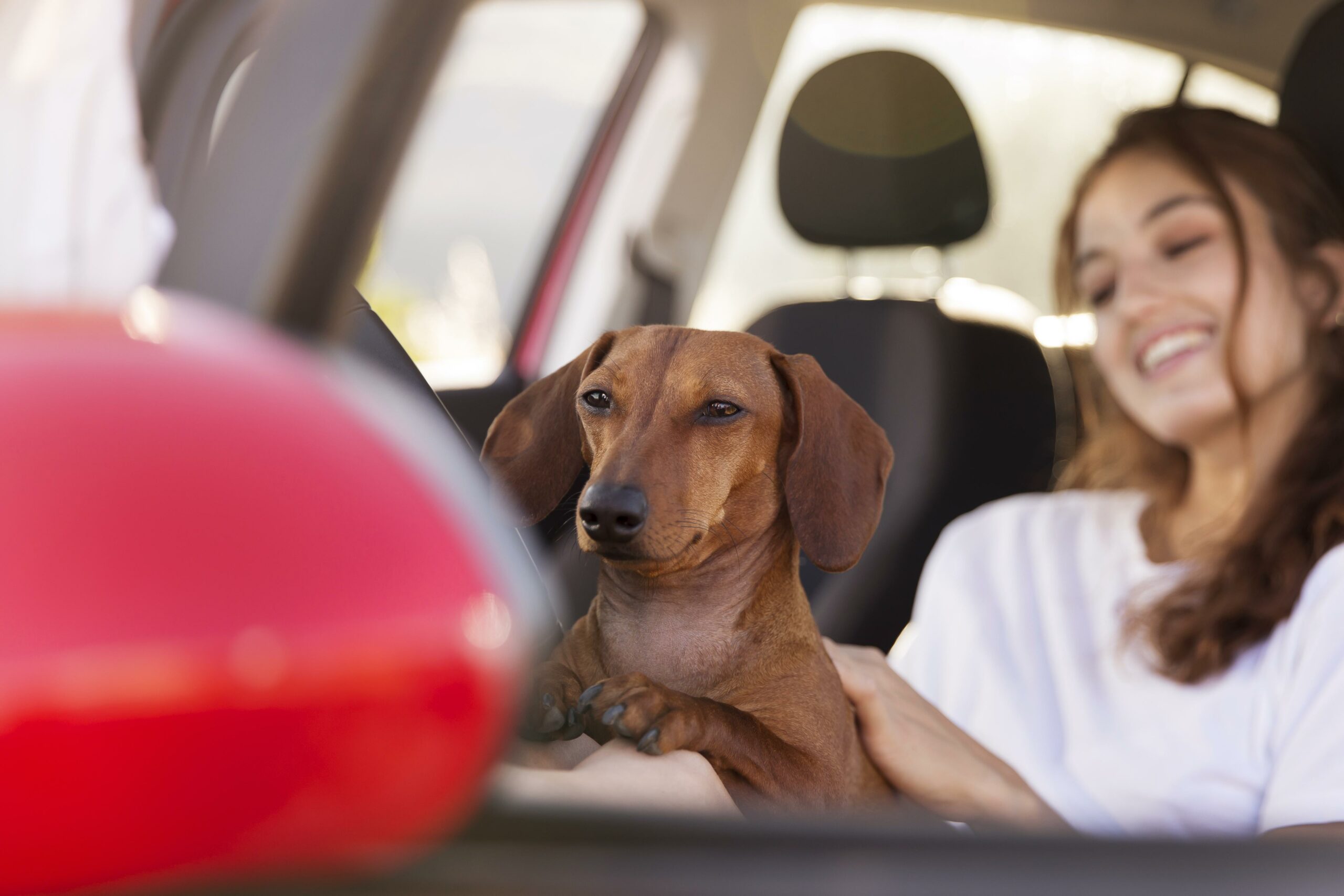Moving cross-country can be an exhilarating yet daunting experience, especially when our beloved pets are along for the ride. According to recent research conducted by the Royal Society for the Prevention of Cruelty to Animals (RSPCA), an estimated 44% of pet owners in the UK relocate with their furry companions. This statistic sheds light on the growing trend of pet owners considering their pets as integral members of their family, even during major life transitions like moving home.
As we embark on this journey, it’s crucial to prioritize the safety and well-being of our furry friends every step of the way. Pets are not just animals we keep; they’re cherished companions who provide us with unconditional love, comfort, and companionship. Their welfare should be at the forefront of our minds as we navigate the intricacies of relocating to a new home.
Whether you’re relocating for a new job opportunity, seeking a change in scenery, or simply pursuing a fresh start, the bond we share with our pets remains unwavering. They’re our confidants, our playmates, and our loyal supporters through life’s ups and downs. Therefore, ensuring a smooth and secure transition for your pets should be a top priority as you embark on this new chapter together.
In this comprehensive guide, we’ll delve into essential tips and strategies to help you navigate the cross-country move with your pets, ensuring a safe and comfortable journey for all involved. From meticulous planning and preparation to prioritizing their comfort and well-being during transit, we’ll cover everything you need to know to make this transition as seamless as possible.
So, let’s embark on this adventure together, ensuring that our furry companions feel loved, secure, and at ease every mile of the way. Because when it comes to our pets, their safety and happiness are non-negotiable.
Planning Ahead
Before embarking on a cross-country journey with your furry companion, it’s crucial to engage in thorough planning to ensure a smooth and stress-free experience for both you and your pet. Planning ahead allows you to anticipate potential challenges and address them proactively, prioritizing the safety, comfort, and well-being of your pet throughout the journey.
One essential aspect of planning is researching pet-friendly accommodations along your route. Not all hotels or rental properties welcome pets, so it’s essential to identify and book accommodations that cater to your pet’s needs. Look for establishments that not only accept pets but also offer amenities such as designated pet areas or nearby walking trails.
Additionally, scheduling a veterinary check-up before your move is paramount. This allows your veterinarian to assess your pet’s health and ensure they are up-to-date on vaccinations. It’s also an opportunity to discuss any concerns or considerations specific to your pet’s well-being during travel, such as anxiety or motion sickness. Your vet may provide recommendations or prescribe medications to help alleviate these issues.
Obtaining the necessary documentation for your pet is another crucial step in the planning process. Depending on your destination, you may need to acquire health certificates or proof of vaccination. Research the requirements well in advance and ensure you have all the necessary paperwork in order. Failure to comply with these regulations could result in delays or complications during your journey.
Preparing a comprehensive pet travel kit is also essential. This kit should include essentials such as food, water, medications, bedding, toys, and grooming supplies. Having these items readily accessible during the journey will help keep your pet comfortable and content. Additionally, consider packing a first-aid kit with basic supplies in case of emergencies.
Lastly, plan rest stops and exercise breaks along your route. Pets, especially dogs, require regular opportunities for exercise, bathroom breaks, and mental stimulation during long journeys. Incorporating these breaks into your itinerary will help reduce stress and discomfort for your pet, making the journey more enjoyable for everyone involved.
In summary, thorough planning is essential for a successful cross-country journey with your pet. By researching pet-friendly accommodations, scheduling veterinary check-ups, obtaining necessary documentation, preparing a pet travel kit, and planning rest stops, you can ensure a smoother and more enjoyable experience for both you and your furry companion.

Pet-Friendly Travel Accommodations
When traveling cross-country with your pet, finding suitable accommodations is vital for a comfortable and stress-free journey. Here are some tips to help you select pet-friendly accommodations and ensure a pleasant experience for both you and your furry companion:
Firstly, it’s essential to plan and book your accommodations in advance. Pet-friendly hotels and rental properties often have limited availability, especially during peak travel times. By booking ahead, you can secure a place that meets your pet’s needs and avoid last-minute stress or disappointment.
When researching accommodations, be sure to check their pet policies thoroughly. Not all pet-friendly establishments have the same rules and regulations regarding pets. Some may have size or breed restrictions, while others may charge additional fees or require a refundable pet deposit. Understanding these policies beforehand will help you choose a place that aligns with your preferences and budget.
Look for accommodations that offer amenities tailored to pets, such as designated pet areas, walking trails, or nearby parks. These features can enhance your pet’s experience and provide opportunities for exercise and exploration during your stay.
Consider the layout and amenities of the accommodation to ensure it meets your pet’s needs. For example, if you have a dog, look for hotels with easy access to outdoor areas for bathroom breaks. If you’re staying in a rental property, make sure it’s pet-friendly and has secure fencing or containment areas to prevent your pet from wandering off.
Lastly, don’t forget to communicate with the accommodation staff or hosts about your pet’s specific requirements. Whether it’s requesting a ground-floor room for easy access or asking about nearby pet-friendly attractions, they’ll likely be happy to assist you in making your stay as enjoyable as possible for both you and your pet.
By following these tips and carefully selecting pet-friendly accommodations, you can ensure a comfortable and enjoyable journey for you and your furry companion. Booking in advance, checking pet policies, and considering your pet’s needs will help make your cross-country adventure a memorable and stress-free experience.

Comfort and Familiarity
Ensuring your pet’s comfort and maintaining a sense of familiarity during travel is essential for their well-being and happiness. Here’s why it matters and some strategies to help your furry friend feel at ease during the journey:
Pets, like humans, thrive on routine and familiarity. Traveling to a new environment can be stressful for them, leading to anxiety and discomfort. By providing familiar items from home, such as bedding, toys, and food, you can help alleviate some of their stress and create a sense of security during the journey.
Bringing along your pet’s favorite bedding ensures they have a comfortable and familiar place to rest while on the road. Whether it’s a cozy blanket, a soft bed, or their favorite cushion, having their own familiar sleeping spot can help them feel more relaxed and settled during the journey.
Similarly, bringing along familiar toys or comfort items can provide entertainment and distraction for your pet during travel. Whether it’s a beloved stuffed animal, a favorite chew toy, or a familiar blanket, having familiar items from home can help keep your pet occupied and alleviate boredom during long journeys.
Maintaining consistency in your pet’s diet is also crucial for their comfort and well-being during travel. Pack enough of their regular food to last the duration of the journey, as sudden changes in diet can upset their stomach and lead to digestive issues. Additionally, bring along their favorite treats to reward them for good behavior and provide a sense of familiarity during meal times.
In addition to familiar items from home, it’s essential to provide plenty of love, attention, and reassurance to your pet during travel. Spend quality time with them, offer gentle pets and cuddles, and speak to them in a soothing and reassuring tone. Your presence and affection can go a long way in helping your pet feel safe and secure during the journey.
By prioritizing your pet’s comfort and maintaining familiarity during travel, you can help reduce their stress and anxiety and ensure a more enjoyable journey for both you and your furry companion. From bringing along familiar bedding and toys to maintaining consistency in their diet, these simple strategies can make a big difference in keeping your pet happy and content during the journey.

Health and Wellness
Monitoring your pet’s health and wellness during travel is crucial for their overall well-being and comfort. It’s essential to stay vigilant for signs of stress or discomfort in your pet and provide necessary breaks for exercise and bathroom breaks.
Traveling can be stressful for pets, leading to anxiety and physical discomfort. Keep an eye out for signs of stress, such as excessive panting, pacing, whining, or changes in behavior. If you notice any signs of distress, take a break from traveling to allow your pet to rest and relax.
Provide regular breaks for exercise and bathroom breaks to ensure your pet stays comfortable and healthy during the journey. Plan stops along your route where your pet can stretch their legs, relieve themselves, and get some fresh air. Remember to bring along water and a travel bowl to keep your pet hydrated during breaks.
By monitoring your pet’s health and wellness and providing necessary breaks for exercise and bathroom breaks, you can help ensure a safe and comfortable journey for your furry friend. Stay attentive to their needs and provide reassurance and comfort as needed to help them feel calm and secure during travel.

Arrival and Adjustment
Upon arrival at your new destination, helping your pet adjust to their new environment is essential for their well-being and comfort. Here are some tips to facilitate a smooth transition:
- – Start by creating a safe and familiar space for your pet in your new home. Set up their bedding, food, water, and favorite toys in a quiet area where they can retreat and feel secure.
- – Gradually introduce your pet to their new surroundings. Allow them to explore one room at a time, gradually expanding their access to other areas of the house. Supervise their exploration to ensure their safety and provide reassurance as needed.
- – Stick to familiar routines as much as possible. Maintain consistent mealtimes, exercise schedules, and bedtime routines to provide stability and comfort for your pet during the adjustment period.
- – Be patient and understanding. It’s normal for pets to experience some anxiety or confusion when adapting to a new environment. Offer plenty of love, attention, and reassurance to help them feel safe and secure.
- – Monitor your pet’s behavior closely and address any signs of distress or discomfort promptly. If your pet is struggling to adjust, consult with a veterinarian or animal behaviorist for guidance and support.
For a smoother and safer relocation experience with your pet, consider hiring professional pet moving services. These experts have the knowledge and experience to ensure a stress-free journey for both you and your furry friend. Contact Pets Lets Travel Business for professional pet relocation services tailored to your needs.

Conclusion
In conclusion, moving cross-country with your pet requires careful planning, preparation, and consideration of their needs. By prioritizing pet safety, comfort, and well-being throughout the journey, you can ensure a successful and stress-free relocation experience for both you and your furry companion.
From planning ahead and selecting pet-friendly accommodations to implementing safety measures during transit and providing comfort and familiarity, every step of the journey plays a crucial role in ensuring your pet’s happiness and well-being.
As you embark on this new adventure with your pet, remember to stay patient, attentive, and understanding during the adjustment period. With proper care and support, your pet will soon adapt to their new environment and thrive in their new home.
We hope the tips provided in this guide will help you and your pet navigate the cross-country move with ease and confidence. Safe travels to you and your furry friend!




